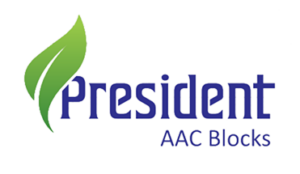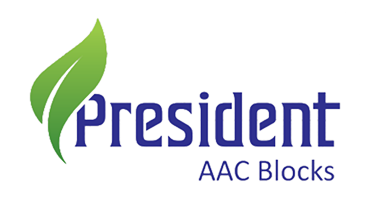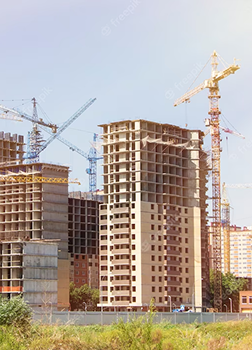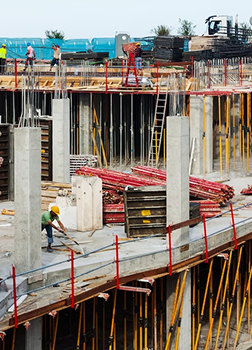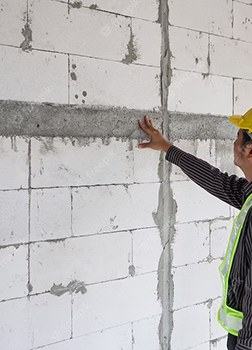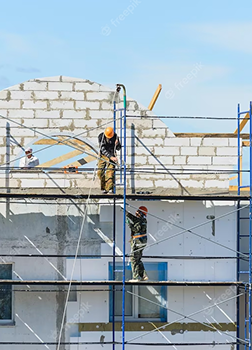Briefing about Product and Manufacturing
Autoclaved Aerated Concrete is a Light weight product based on calcium silicate hydrates in which low density is attained by the inclusion of an expanding agent Aluminium powder resulting create porocity inside the block to make it light weight. Under controlled conditions Pond Ash, cement, Quick Lime Powder, Gypsum and water are mixed.Aluminium powder is used as a foaming agent in require quantity (depending on the prespecified density).When AAC is mixed and cast in forms several chemical reactions take place that gives AAC its light weight. Aluminium powder reacts with calcium hydroxide and water to form hydrogen. The hydrogen gas foams and doubles the volume of the raw mix.When side forms are removed from the material, it is solid but still soft. It is then cut into blocks then placed in an autoclave chamber for 12 hours. During this steam pressure for concrete formation, when the temperature reaches 180 to 190° Celsius by corresponding pressure reaches around12 bars,Silica available in Ash reacts with calcium hydroxide (with Cement and Quick Lime) to form calcium silicate hydrate (Stable Concrete). During the Autoclaving process, become shaped Tobermorite crystals (5Cao.6SI02.5H20) are formed as a major component of AAC.
Autoclaved Aerated Concrete is a Lightweight, Load-bearing, High-insulating, Durable building product, which is produced in a wide range of sizes and strengths. AAC Blocks is lightweight and compare to the red bricks AAC blocks are three times lighter.
In AAC production Calcium from Cement and Lime in the mix reacts with Silica from Pond Ash, Cement & water to form 1.1 nm Tobermorite. Lime + Silica + Water resulting 1.1 nm Tobermorite
The Autoclaved Aerated Concrete (AAC) material was developed in 1924 in Sweden. It has become one of the most used building materials in Europe and is rapidly growing in many other countries around the world.
AAC is produced from the common materials lime, sand, cement and water, and a small amount of rising agent. After mixing and molding, it is then autoclaved under heat and pressure to create its unique properties. AAC has excellent thermal insulation and acoustic absorption properties. AAC is fire and pest resistant, and is economically and environmentally superior to the more traditional structural building materials such as concrete, wood, brick and stone.
- High thermal insulation and energy
- Strong and Durable
- Light weight
- Easy to work with
- Fast Construction
- Economical
- Fire resistant and no emission of gases
- Noise resistant
- High dimensional stability
- Environment friendly
- Non-toxic and no emission of radioactive material
- Electricity saving
- Construction of dwellings and businesses.
- External walls because of their outstanding insulation properties.
- Multi-storey construction and it is quite viable for even 5-storey constructions.
- Entire residential areas are built using autoclaved aerated concrete.
- A very big reason for this is the ease of application, even for the non-professional, thus enabling a high level of personal contribution and resulting in a reduction of building costs.
- Used for internal walls as walls are so level, they can be finished with a very thin coat of plaster (3-5 mm).
- Can be used to quickly create kitchen surfaces. And also easy to remove without damage to the surroundings.
- Stacking
- Mortar For Masonry
- Wetting of Block Before Application
- Mortar Thickness
- Coping Beam
- Curing of Masonry Wall
- Cutting of Block
- Lintel support
- Electric & Sanitary Chases
- Plaster
